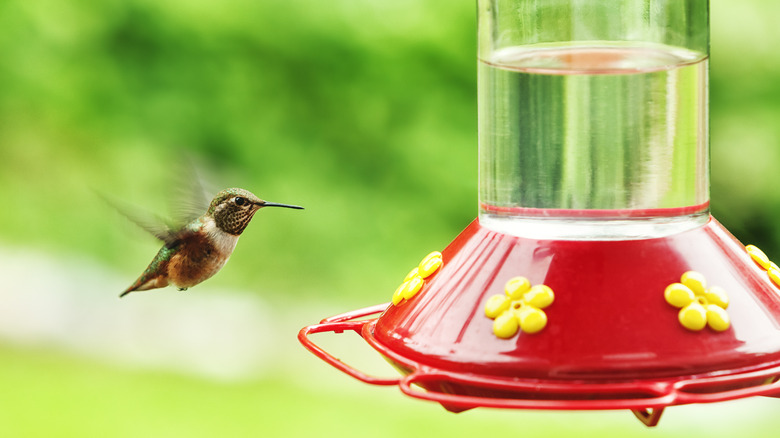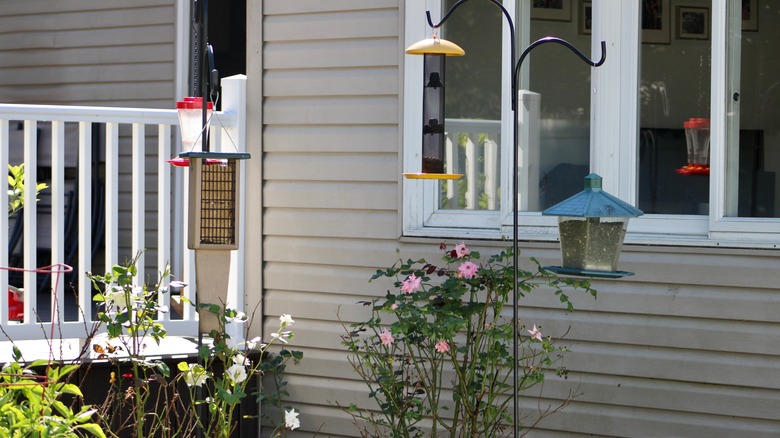Yes, You Can Hang A Hummingbird Feeder Near Your Window, But Avoid This Mistake
Hummingbirds — especially recently fledged hummers and ruby-throated hummingbirds – are backyard birds at high risk of flying into windows. Basically, when these birds leave feeders, they tend to dart away quickly. If they mistake what they see reflected in a window for more garden or sky, they try to fly through it and damage themselves on the glass. So, how do you determine the best place to put your hummingbird feeder with windows in the equation? Believe it or not, hanging a feeder super close to a window is as helpful for hummers as placing it really far away. But here's the mistake well-intentioned bird lovers often make: You need to avoid the space in the middle of those two sweet spots at all costs.
If you want to get up close and personal with your nectar-drinking visitors, there's a simple trick that'll turn your balcony into a hummingbird hotspot. Install your feeder within 3 feet of a window or literally stick it onto the window with, say, suction cups. If a bird hits the window at this distance, they won't have enough time to build up the thrust necessary to injure themselves. What's more, having a feeder right next to or on the window encourages birds to move slowly around glass instead of dashing into it. It's not too much of a stretch to say that attaching a hummingbird to your window prevents collisions and, as a bonus, you get ringside seats to arguably one of the most fascinating mealtimes in the avian world.
Is your hummingbird feeder hanging in the danger zone?
Can't hang your hummingbird feeder within 3 feet of a window? Take a bunch of steps back – 30 feet worth of steps, in fact — and suspend it there. Even flighty birds startled by a predator will have enough room to circumvent a glass barrier and avoid a strike. A big error you don't want to make with your hummingbird feeder is hanging it in the danger zone — that is, between 3 and 30 feet from a window. Researchers have found that this 27-foot-span of clear space represents the distance that birds need to build up enough speed to hit the glass with a force that could be fatal.
After you hang your hummingbird feeder on or near the window, step back and take note of what you can see behind it. Is foliage and sky reflected back to you, or does it look like open space? If yes, make windows safe for hungry hummers by moving house plants from view and putting decals on the window. While stickers depicting hawks and other birds of prey are popular, the image or silhouette on the decal doesn't actually matter. Instead, anything on the window breaks up the reflection — as long as the stickers are over ¼-inch wide and placed no more than 2 inches apart. Approaching birds will treat the window as a wall rather than open space. Other anti-strike window treatment options include, as a last resort, mesh netting.

